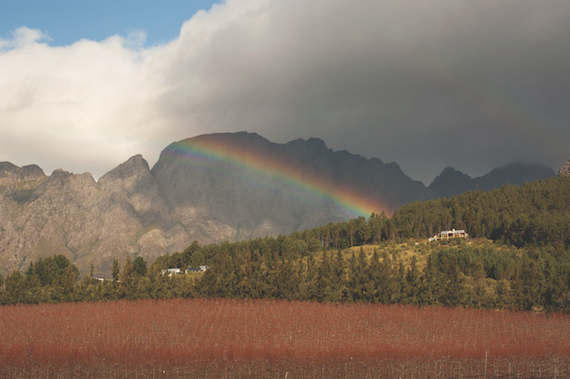When you consider that Richard Hennessy was an Irishman, the Hine family came from Dorset in southern England and the Dutch invented genever/jenever, the forerunner to gin, it is hardly surprising that South Africa has a long and proud tradition of making brandy.
In fact, the word ‘brandy’ comes from the Dutch ‘brandewijn’, meaning burnt wine. The history of brandy in South Africa goes back to Jan van Riebeeck of the Dutch East India Company who incentivised his crew by offering a tot of brandy to the first person who saw land. The lucky sailor spotted Table Mountain.
According to the South African Brandy Foundation, the first brandy in South Africa was distilled aboard the Dutch ship Pijl, anchored in Table Bay harbour in 1672. An assistant cook succeeded in transforming two leaguers (1,164 litres) of Cape wine by double distilling into three ankers (a common-sized cask on sailing ships, containing roughly 40 litres) of brandy. The quality of locally-produced brandy remained poor, so expensive European brandewijn continued to be imported by the ruling class.
Distillation was banned briefly in the early 1700s but that just drove production underground. In 1869 Sammy Marks from Lithuania established what is regarded as the first proper distillery on a farm outside Pretoria. A young French ex-cavalry officer with a masters degree in science and some distilling experience from Cognac was recruited. René van Elbergen Santhagens brought with him an alembic Charantais copper pot still. He introduced the Cognac way of double distilling.
The Anglo Boer war intervened and Santhagens went back. When he returned he went to the Cape and was instrumental in setting up the Golden Lion distillery at Vlottenberg, which was the forerunner to the Van Ryn distillery. Santhagens was the catalyst to better quality and he set up his own distillery, Oude Molen, in Stellenbosch.
In the 1880s phylloxera struck South African vineyards, which meant grubbing up vines and replanting with phylloxera-resistant American rootstock. Then followed the South African war and World War One.
In 1918 the Koöperatieve Wijnbouwers Vereniging (KWV) was formed to protect wine farmers’ interests. Under a 1924 act, KWV came to control all wine and brandy production. Prices were fixed and surplus wines were sold to the KWV for distilling. The brandy production was centralised. Love it or loathe it, KWV is credited with setting guidelines for brandy production.
Basically Chenin Blanc and Colombard are used mainly for base wine in South African brandy (see panel). The grapes come primarily from SA’s warmer wine-growing regions. After fermentation, distillation takes place in copper potstills.
One cloud in the history of South African brandy was its use particularly during the Apartheid era as a way of paying manual workers instead of money. The practice encouraged alcohol abuse and further impoverished workers.
Brandy and beer became the drinks of the poor and indigenous population, whereas imported spirits and wine were essentially the drinks of the white ruling classes. That has been changing.




